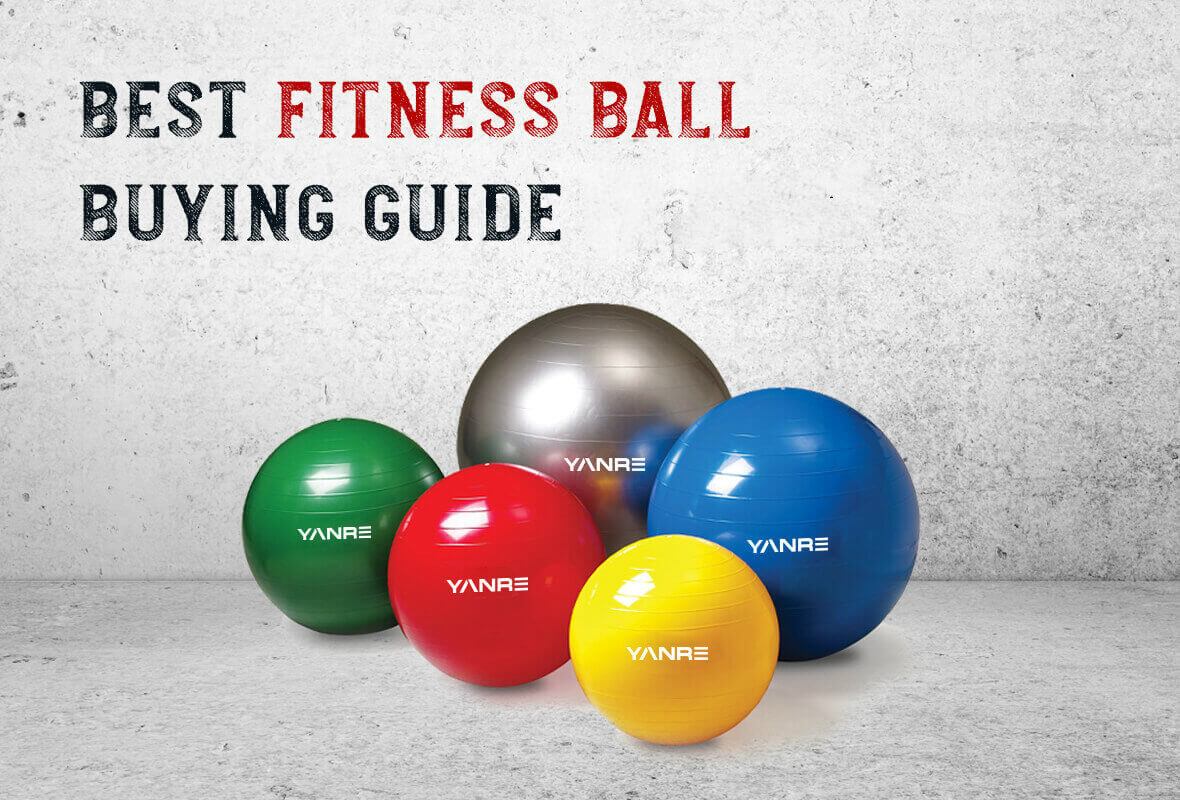Medicine balls, or med balls, are age-old fitness accessories that are still trending in the modern workout scene. These are commonly available in almost all gyms and physical therapy centers across the globe.
If you plan on purchasing medicine balls for your gym, this is the ultimate guide by Yanre to choosing the very best. Below we’ve discussed the different types of medicine balls, the essential properties to consider, and buying traps to avoid.
Containing useful insider knowledge gathered from some top industry experts, we have compiled the most comprehensive buying guide for medicine balls online in the next sections. Read on to find out everything you should know about med balls before you make a purchase!
Table of Contents
The Difference between a Medicine, Slam and Wall Ball
Fitness ball varieties are not just limited to medicine balls. Weighted balls like slam balls and wall balls are also popularly used in different kinds of training. All these balls can be found in a wide range of weights, from 2 lbs to 50 lbs. Sizes also vary, from the smallest being approximately the size of a softball to the larger ones being slightly bigger than a basketball. While there are not many remarkable differences between the three types of fitness balls, you should still try to get the right kind that would most suit your fitness journey.
Medicine Ball – Bouncy Ball
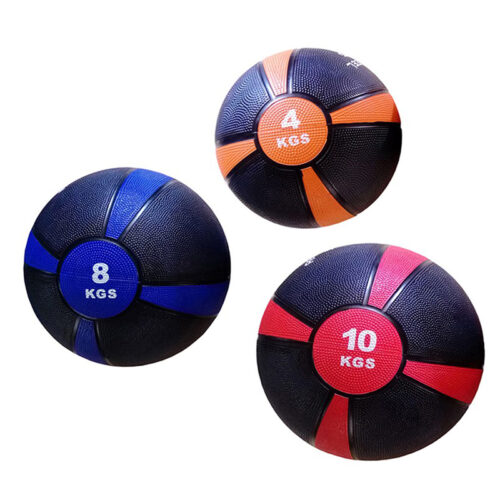
- A medicine ball may split up upon hitting the floor.
- A typical med ball will bounce, so throwing it towards a wall or the floor isn’t recommended as it could hit you on its way back.
- Hollow med balls are the ones that bounce.
Slam Ball – Dead Ball
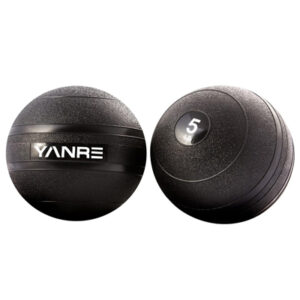
- A slight variant of the medicine ball is a slam ball.
- It is made for being lifted overhead and slammed onto the floor with as much force as you can.
- It usually has a hard rubber shell that can bear high impact forces when hitting solid surfaces.
- A slam ball is ‘dead’ in the sense that its bouncing capability is little to none.
- These balls usually contain sand or steel shots as filling.
- It’s common for slam balls to possess space or ‘play’ inside them to enable proper slamming.
Wall Ball – Soft Outer with Hard Core
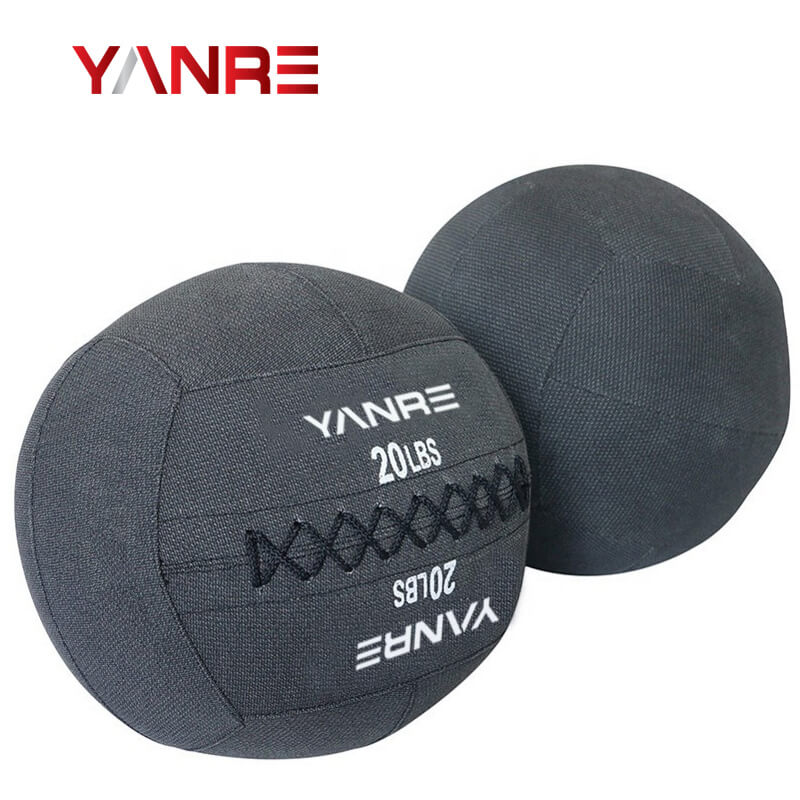
- Wall balls also don’t bounce.
- The typical wall ball material is vinyl fabric. They are somewhat padded on the outside, having a more rigid core.
- While wall balls are meant for throwing exercises too, they’re actually made for exclusively being thrown at walls.
- A wall ball is generally the largest out of the three kinds of weighted balls.
- Find out more about wall balls in our best gym owner’s wall ball buying guide now!
Medicine Ball Quick Comparison Chart
There are more materials used in medicine ball construction than you would expect. The following comparison chart will help compare different materials’ properties and how they influence a fitness ball’s quality. This will be helpful in determining the kind of ball suitable for you.


Medicine Ball Types
Medicine balls are essential accessories in fitness training. These can be included in a variety of exercise regimes and athletic activities.
Some time after their invention, various brands started introducing new and improved versions of these balls to facilitate physical training further. Med balls of different designs, materials, and shapes were manufactured to achieve the best properties for convenience and flexibility.
Based on their appearance and basic design, med balls can be categorized into three types:
- Bouncy medicine balls
- Medicine balls having a handle
- Medicine ball with rope
Bouncy Medicine Balls
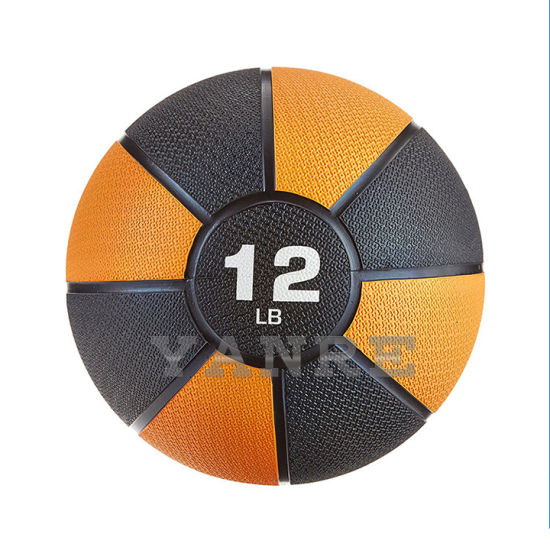
Med balls with hard exteriors filled with air tend to bounce back when thrown at a wall or on the ground. This makes them handy in workouts where you need the ball to get back in your hands fast.
Such balls are relatively lightweight since heavy weighted balls can be dangerous if bounced by inexperienced hands.
To sum it up, bouncy med balls
- are not for throwing against walls or floors
- may be difficult to grip and should be held by both hands
Medicine Ball With Handle/Grip
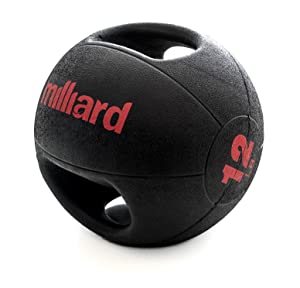
Some movements are tricky to carry out with a regular medicine ball since they require a firmer grip. Med balls with handles can be a great solution to this problem. These balls have gained a lot of popularity since they are versatile enough to offer all the exercises that regular medicine balls provide, along with all kinds of kettlebell workouts as well.
To enable a firm grip that keeps you free to move, these balls may have a handle on either or both sides. They are usually heavy-duty and used in several power-building, high-intensity exercises.
Handled medicine balls are commonly made from polyurethane, a very sturdy material. These are just as common as leather balls in commercial gyms, although they cost the most among all the three types we’ve mentioned.
Pros:
- Easy grip
- Can be held with one hand
Cons:
- Costly
- Not recommended for throwing exercises
Medicine Ball with Rope – Tornado Ball
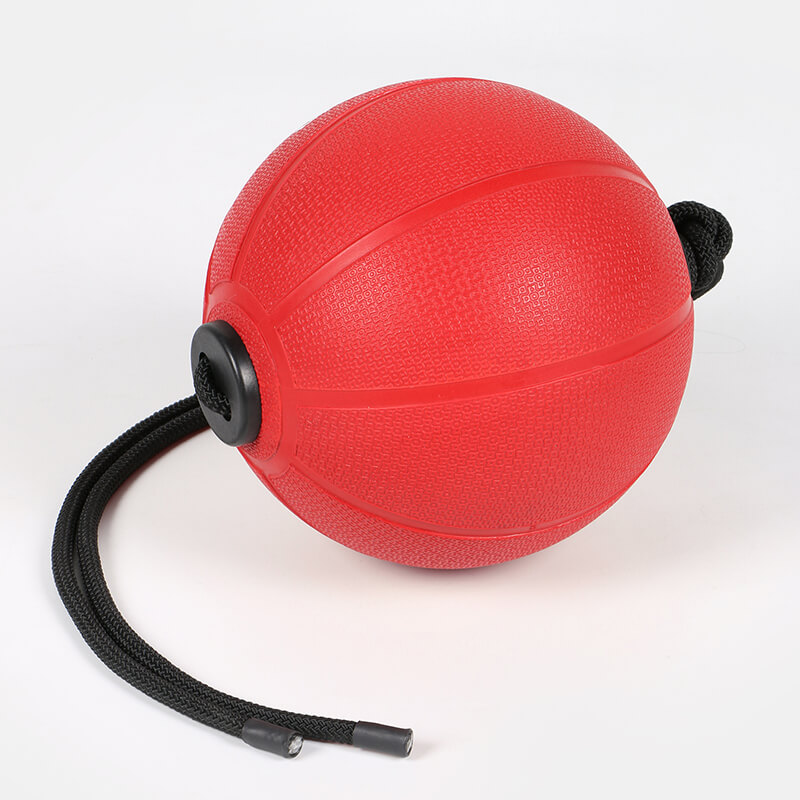
The latest med ball innovation is the rope ball, receiving increasing popularity, especially among Functional Training and conditioning trainees. These are med balls having a rope through their center and can work great for swinging workouts that can get quite explosive and are very useful for core training and high-intensity conditioning.
Some rope balls have the rope as an attachment. It could be either permanently attached or may be removable to allow addition upon will. You can perform swinging and core-strengthening workouts in the best manner with these balls. However, they aren’t commonly available, being mostly kept at athletic courts or centers.
Medicine Ball Physical Structure
The two main parts of a medicine ball are its shell and filling.
Materials used for making med ball shells vary, with nylon, polyurethane, leather, vinyl, and dense rubber being typical. The filling also varies from brand to brand, with sand, gel, or simply air being used in standard medicine balls.
Shell
While a lot of medicine balls available out there use high-grade rubber, some athletes may still give preference to leather ones. There are other shell materials to choose from as well, like Kevlar and vinyl.
Genuine Leather
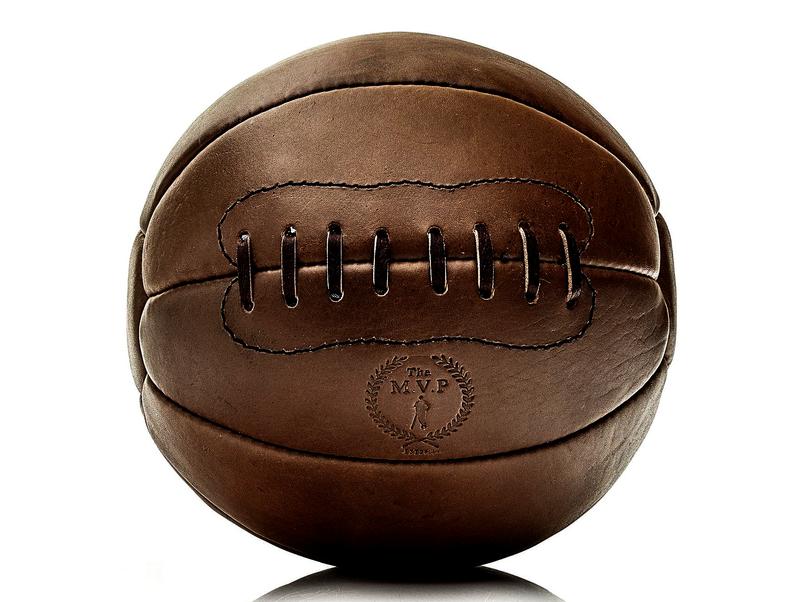
There was a time when medicine balls were made exclusively from leather. Its waterproof nature (although persistent moisture can cause spoiling) and its durability make it work well in med ball shells.
Leather medicine balls come in a range of weights, commonly marked with two values, such as 10-12 lbs. While they may not indicate the exact weight, it shouldn’t be an issue since there’s not much variation. These balls also offer a good grip so that you can catch them conveniently and use them for your abdominal workouts.
Although they’re the oldest kind of medicine balls, they remain the most popular. It’s common to see them in fitness centers too. While you can buy genuine leather balls, they’ll need more care than rubber or synthetic leather ones.
Pros:
- Moisture resistant
- Easy grip
Cons:
- The weight isn’t accurate
- Costly
- Need to be kept away from sunlight
- Need more care than other materials
- Not as durable as other materials
Synthetic Leather – PU and PVC
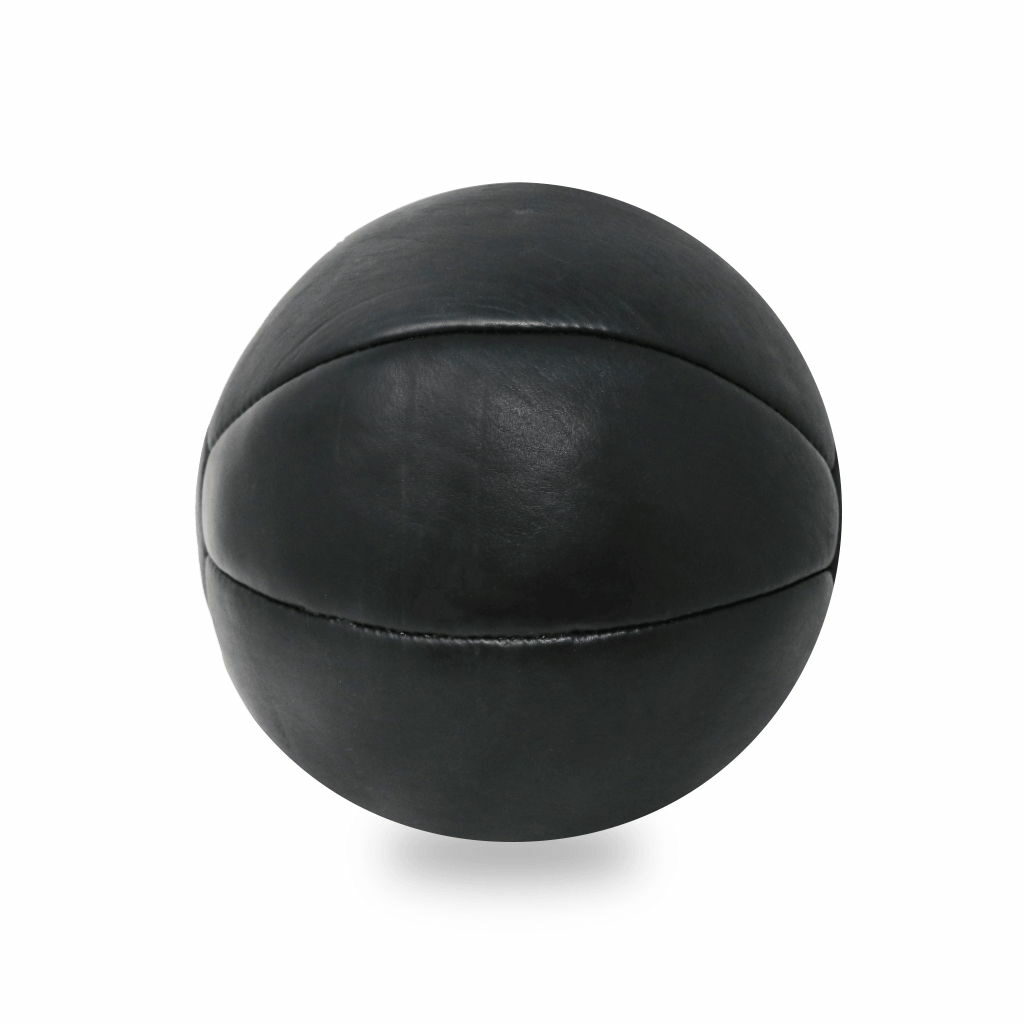
While leather may be the material of original medicine balls, faux leather is more commonly used now.
Synthetic leather has better durability and more resistance to impact and offers an excellent grip. Wall balls usually use PU and PVC materials as synthetic leather.
PU is superficially more like genuine leather, offering better touch and feel. However, it has poor wear resistance with an anti-beat ability being lower than 500 times. Consequentially, you will likely see some surface damage within the first year of buying. PU also tends to get slippery as your hands sweat.
PVC leather is more resistant to wear, being usable for 2 to 3 years. Its vinyl coating can be tough enough to bear repeated throwing against walls. It is moisture-proof and scratch-proof, too, so both your wall and the ball itself will stay mark-free after use. The three PVC grades used in synthetic leather med balls include 1000D, 500D, and 600D, with 1000D having the most significant wear resistance.
Synthetic leather offers superior grip even in challenging conditions and sweaty hands. This kind of exterior has good durability, almost like real leather but without the added upkeep. While genuine leather requires cleaning and conditioning for maintenance, it’s usually enough just to wipe down faux leather and clean it if it gets dirty.
Pros:
- Good grip, even with moisture
- Waterproof and moisture-proof
- Better durability than the genuine leather and suitable for outdoor use
- Less upkeep required
- Priced lower than real leather
Rubber
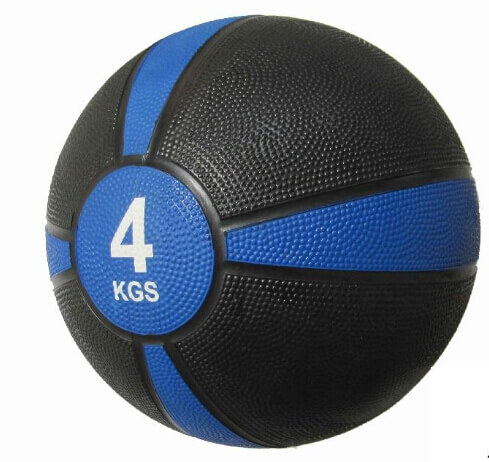
One of the most popular exterior materials available out there is rubber. It works perfectly for fitness accessories that need to hold up to a high amount of impact forces. While most of these balls still aren’t meant for use as slam balls, many people do throw them against walls, causing a lot of wear and tear.
The toughness and durability of a rubber surface of a medicine ball help you grip it better than many other materials. This makes such med balls suitable not just for throwing and catching workouts, but also enables you to focus on the present exercise instead of worrying about losing your grip of the ball.
With all that said, rubber balls don’t remain usable for very long periods. Months of rough use can create cracks or deformities, affecting their bouncing ability and sometimes even causing leakage. Rubber is generally made from mixing various materials, out of which latex rubber works better than the recycled kind.
Pros:
- Durable
- Adds to the ball’s bounce
Cons:
- Strong rubbery smell
- The latex may cause allergic reactions
- Costly
Kevlar
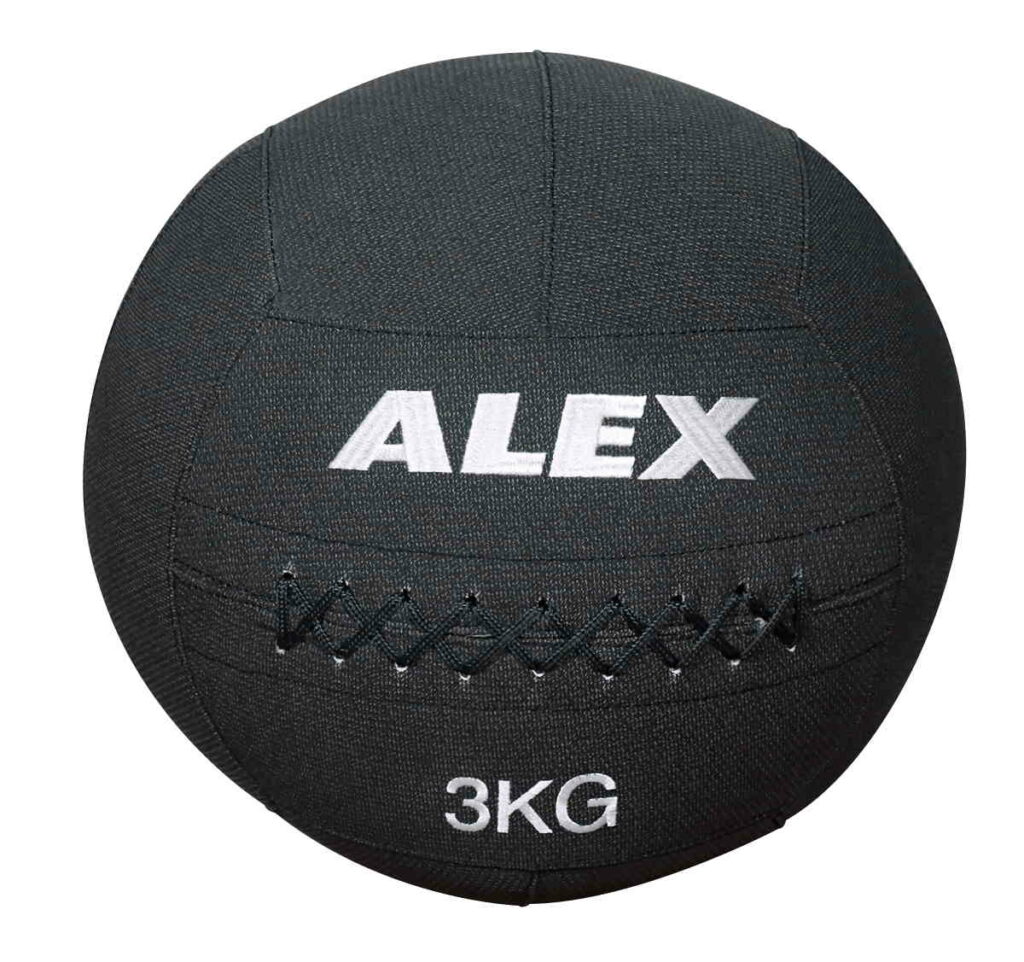
Kevlar is a modern organic fiber composite manufactured by Dupont. It has the ideal combination of medicine balls’ properties – low density, great strength, and good tenacity. Despite having five times the strength of steel, Kevlar has only one-fifth of steel’s density. These properties have made its use widespread in military equipment like armored vehicles, tanks, bulletproof vests, etc. Of course, the use of such state-of-the-art material will result in top-notch quality medicine balls, but they will also end up being expensive. You should know that Kevlar is a patented material, so beware of fakes since there are many!
You can expect a med ball made of Kevlar to retain its shape even after repeated slams. They’ll also be resistant to water and won’t be affected by any weather conditions, being suitable for indoor and outdoor use. Kevlar balls can be used on several different kinds of surfaces, from concrete, dirt, or pavement to gravel and asphalt. The textured surface of these exercise balls further enables a firm grip, allowing full user control.
Pros:
- Holds well to wall slams
- Suitable for indoor and outdoor use
- The most durable med ball material
Cons:
- The most expensive med ball material
Fillings
Air
Some med balls may be entirely filled with air or have air along with some other material inside them. If you want a bouncy medicine ball or one that can float, air-filled balls may be suitable for you. The greater the amount of air in a medicine ball, the more is its ability to bounce. Naturally, air-filled balls will require a pump for inflating them. Other than that, they’re also lighter than med balls filled with more solid materials.
These medicine balls have vinyl surfaces and a more significant bounce to them. You can best use them in plyometrics and resistance training workouts.
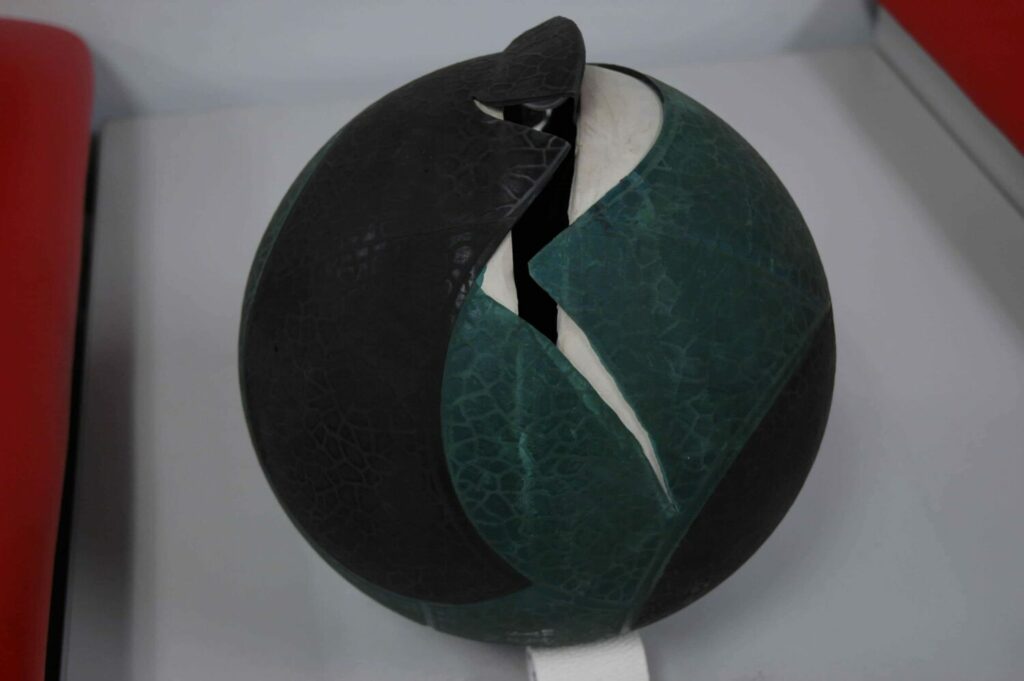
Warning: These medicine balls can be dangerous when thrown on a wall or the ground if caution is not exercised.
Cotton
A mixture of cotton with other materials may be used for filling some medicine balls. Cotton-filled balls are soft and easy to catch, being low-impact. Such balls also don’t cause the problems of uneven weight distribution, while maintaining their shape well. Some may even have double-coated inner sandbags that enhance the central balance, durability, and anti-burst properties.
Sand
Sand-filled med balls are relatively safe to use. You can slam them onto the floor without the danger of the ball bouncing back at you forcefully and causing injury.
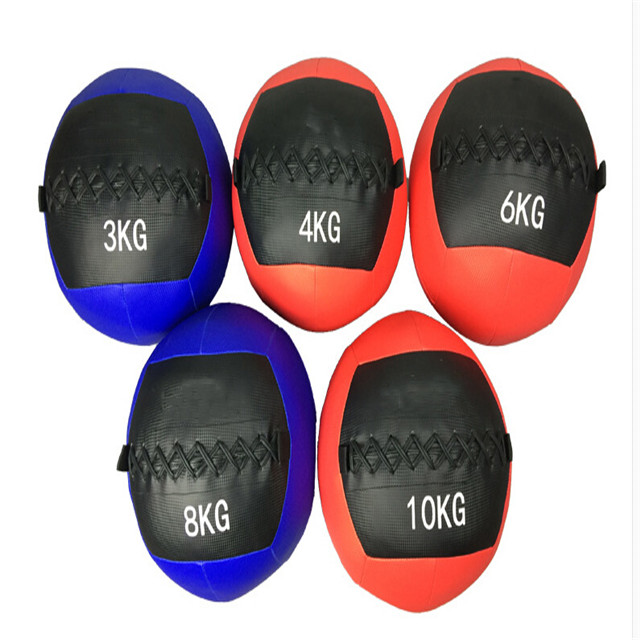
Pros:
- Affordable
- Soft and safe
Cons:
- unbalanced weight distribution
Gel
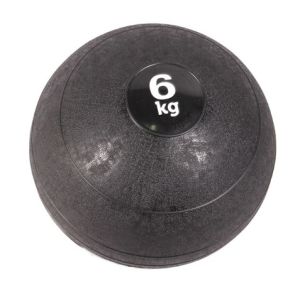
A gel is the cheapest of all medicine ball filling materials. Such balls usually have shells made of vinyl and a unique gel core. These balls also don’t bounce due to their gel-based filling. They’re widely used in physiotherapy and rehabilitation due to this property. Moreover, gel-filled balls are great for slamming exercises and long-distance catching and throwing too.
Handle
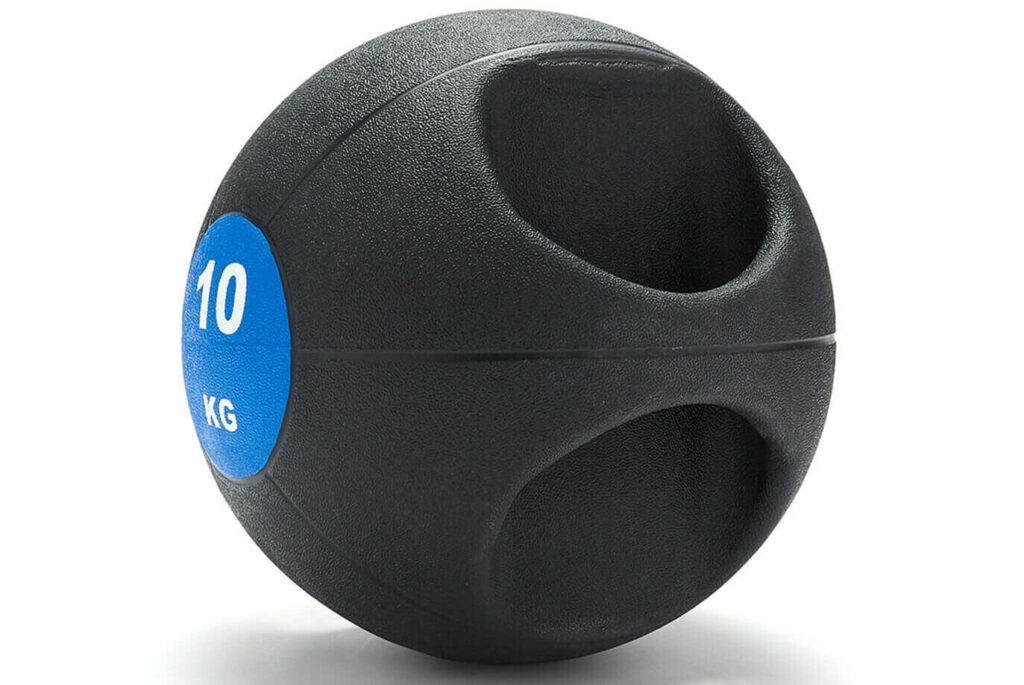
Handles are not that rare on medicine balls, often made from nylon. These may be either strapped to the sides of a ball with plastic grips, or a single one may be attached on the top, kettlebell style. Always check if the handles are carved out of the sides to ensure that they won’t interrupt the ball’s spherical outline, which may cause awkwardness during handling. Medicine balls with poor construction may have flimsy handles that don’t allow you to work out with them conveniently.
Lace
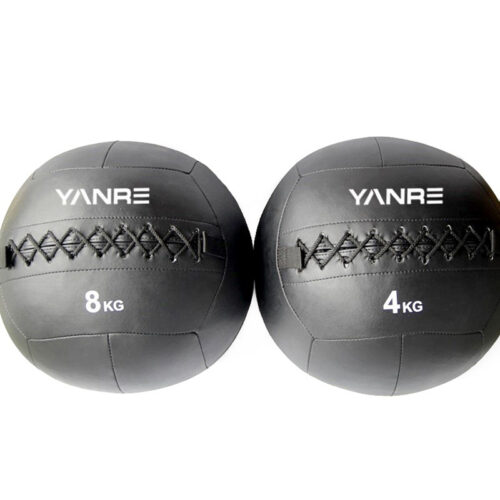
Many leading brands will use laces to reinforce a medicine ball at its weak points. The laces need to be heavy-duty and durable and should not unravel or fall apart during use.
Medicine Ball Physical Properties
As awareness about general health and fitness is becoming more common, so is the use of medicine balls. Several different kinds of med balls are being manufactured nowadays with unique combinations of properties.
The following sections will brief you on the fundamental properties to look for when making a purchase.
Size
A medicine ball’s size doesn’t correspond to its weight. Top brands have set a standard diameter of 14 inches for medicine balls, no matter what the weight. Look for the actual weight of a medicine ball, printed on its surface.
Weight
The two deciding factors of a medicine ball’s weight are its shell material and filling type. Balls filled with sand are generally heavy, while leather is the heaviest among shell materials.
Some brands offer only one size in medicine balls of several different weights, while others have increasingly larger balls as the weight goes up. In such cases, the lightest balls are relatively smaller than the heaviest ones.
The even distribution of weight is a significant factor in med balls. These balls may be weighted in several different ways. The most common ones are the concentration of the entire weight at a single spot in the ball or its distribution over multiple locations throughout the ball. While some seem like convenient solutions, careless and low-quality manufacturing methods can throw the weight off-balance. Such med balls can then become problematic and potentially dangerous to use.
Leading brands test their medicine balls repeatedly to make sure that there is no shifting of the weight. If the test fails, they employ various materials and methods so that the weight can be locked into its correct spot.
Material
Shell
While the majority of medicine balls have high-quality rubber shells, not all are meant for slamming exercises. Some are lightweight and soft, so you should first figure out the kind of workouts you need a medicine ball for.
If you have already decided to carry out explosive and dynamic slamming activities, then you should buy a med ball that is heavy-duty and sturdy enough to hold up to repeated rough use.
Fillings
The slam ball material refers to both the outer shell and the inner core substances used.
For the filling, a medicine ball should have a highly stable core, especially if you want something durable for strength training. In such cases, it’s better to avoid sand or gel-filled balls, and even air-filled balls are not recommended.
Durability
Stitching
Since medicine balls are meant to face plenty of rough use during workouts, they should be tough enough to hold up to such repetitive beatings. First and foremost, durable medicine balls should have their stitches reinforced with their seams being double or triple stitched.
Wherever the surface material meets on the ball instead of being continuous, the chances of tearing increase. The extra stitches make the balls stronger at their weakest points. The stitches are better placed inside the med ball since this adds to the durability and decreases any chance of unraveling.
Yanre medicine balls are reinforced with double-stitched nylon threading, as a definitive effort to provide optimal functionality and superior durability even with rough use.
Shape retention
Even if appropriately used, med balls tend to lose their shape eventually. Premium brands like Yanre Fitness offer med balls made from rigid surface materials that don’t slack off to allow any shifting of the inner contents. Manufacturers should always test their products to the max to ensure they won’t be deforming any time soon.
Weight distribution
How the weight of a medicine ball is placed inside it also determines its durability.
Warranty
The warranty package of a med ball can often give you a fair idea of its durability. Good-quality balls will generally have at least a 1-year warranty, while the best ones may even have two years.
Bounce
Not all medicine balls are supposed to bounce. One some are made that way. The traditional rubber medicine ball possesses a decent amount of bounce but should be used carefully, especially in wall ball exercises.
Traction
A slippery outer surface can make your ball very difficult to handle. Similarly, too rough a medicine ball can cause discomfort and soreness of the hands with regular use.
If you tend to sweat a lot, traction is especially significant to consider. Slipping will eventually happen no matter how much traction your medicine ball has if your hands sweat profusely. We recommend using chalk with your balls to help keep things dry. This is also likely to increase efficiency by saving the time you would take to wipe your med ball between exercises. However, you can continue to make do without chalk if you’re not too competitive – simply wipe the ball between sets to enable a good grip during your workout.
Color
Medicine balls aren’t usually color-coded according to their weight. Some manufacturers, however, do have a unique color of medicine ball for a set weight. In such cases, the lighter ones are typically green or yellow, with blues and blacks used for heavier balls. You should still always confirm the weight by checking the print on the ball’s surface – the number of pounds is mentioned right over it.
Buying Tips and Traps to Avoid
- An evenly distributed weight is always essential in a medicine ball. It should also not shift during use. It’s still best if you can open up a ball from inside out to look at the materials used, and see for yourself if the filling is tight enough to stay in place.
- Generally, medicine balls from brands that provide one size in a range of different weights are better.
- Prefer embroidered weight labels over ironed or applique ones. These stay in place better, being unable to peel off or fade with use.
- Always prefer balls having reinforced seams, at least double or triple stitched. These should be on the ball’s inner side to enhance durability and prevent unraveling with regular use.
- Evenly balanced wall balls have an identical bounce every time, so they’re predictable and safer to use. They’ll always follow a straight path in the direction in which they are thrown, without turning. A med ball’s balance can be tested by rolling it on the floor for a distance of about 3m and noticing whether it follows a straight path.
- Prefer med balls having at least a year’s warranty. Moreover, ask the manufacturer if it has undergone a fall test to predict the service life. 3000 times is the minimum fall test result of a good-quality med ball.
- Color-coded options can be better for commercial gym settings.
Manufacturing Process
It’s always better to be familiar with the steps through which the raw materials are processed to form a medicine ball. This way, you will be able to negotiate better with factory representatives. The more your knowledge about a product, the better decisions you will make about its sourcing and price point.
For instance, in the case of rubber medicine balls:
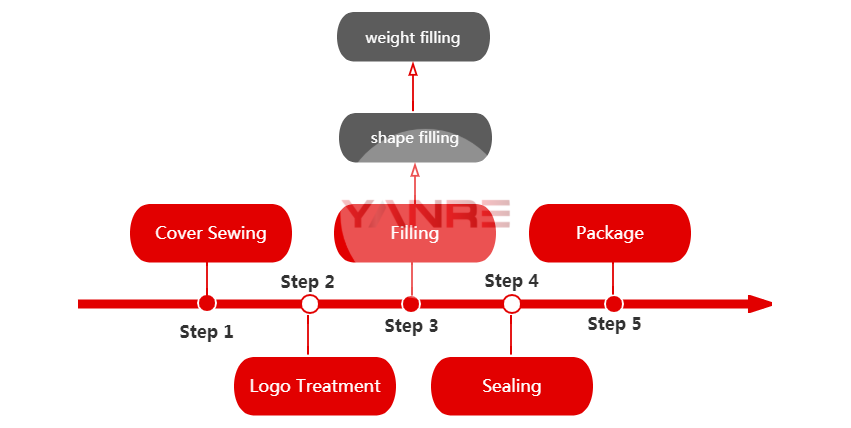
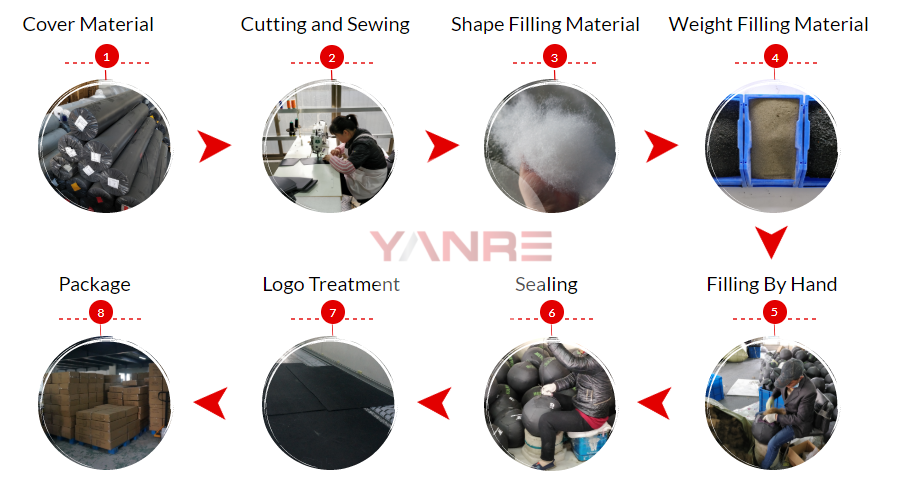
Conclusion
We hope this gym medicine ball guide serves as the ultimate resource for all med ball-related info. If you still have any queries about purchasing the best medicine balls for your gym, ask us in the comments, and we’ll get back to you soon!
Related articles:

